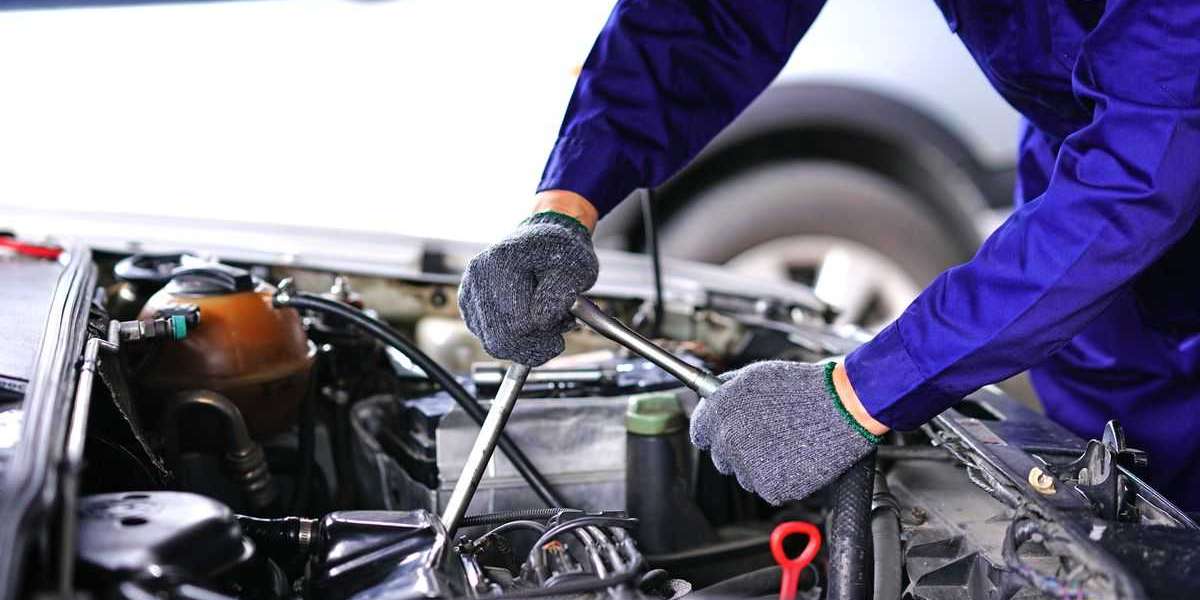For some, driving is a fun way to pass the time; for others, it is a mode for transportation to and from work on a daily basis, while for many it’s a little bit of both. Regardless of the reason why you bought a car, paying the dealership and driving your car from the lot is not the end of your responsibilities. We are all aware of the adverse effects of global warming, and while it’s not fair to put the blame on your sedan that’s parked outside, research shows that vehicle emissions do contribute to not just ambient air pollution, but also environmental health concerns. For more at auto fix
While the smoke that’s being coughed up by your vehicle’s exhaust might look like harmless smoke – it is actually a combination of hydrocarbons, carbon monoxide, and nitrogen oxides, when if left unchecked, can do a number on the environment and your vehicle. This is mainly because a larger volume of these gasses being emitted from your vehicle means that there’s an issue with the engine that needs to be addressed.
According to the US VIO Vehicle Registration Statistics, there are around 287 million vehicles on the road in the US today, so it’s safe to say that the number of gas-guzzling vehicles is only going to rise (not just in the US, around the world). This is where car emissions testing comes in. Here, we are going to take a quick look at all you need to know about car safety and emissions testing to make sure that your vehicle is safe while on the road, not just for the environment, but also for its own longevity.
Car Safety and Emissions Inspections: Explained
Many US states require vehicle owners to carry out safety and emissions inspections, but surprisingly, there are many folks who still do not know what is a car safety inspection and emissions inspection. It goes without saying that you are going to need a qualified mechanic to perform these inspections, which means you will have to your car to a mechanic’s shop that has a mechanic who is certified to carry out a thorough and accurate car safety inspection and emissions inspection. Once you’re at the mechanic’s shop, you can expect the following:
Car Safety Inspection
When you want a car safety inspection for your vehicle, the mechanic will check a number of different components and features of your car thoroughly before assessing whether or not each component is performing at an optimal level. Some of the components that a mechanic will inspect during a car safety inspection include, but aren’t limited to the bulbs, reflectors and lamps, brakes, wheels and tires, mirrors, windshield wipers, exhaust system, steering wheel, horn, seat belts, gas caps, and window coating or tinting if you have any.
During the car safety inspection, if the mechanic notices any issues, he will make a recommendation on whether that particular part or component needs to be replaced or repaired. It is essential to follow the instructions of the mechanic for not only your safety but also the safety of your passengers. Once the car safety inspection has been passed successfully the mechanic will place a sticker on the car’s window, indicating that your vehicle is safe for the road. This sticker will come in handy for keeping law enforcement from stopping your vehicle if they suspect car safety issues. For more at paint car
Emissions Inspection
As the name implies, an emissions inspection is going to check the amount of emissions that are coming out of the exhaust. The state laws on emissions inspections vary, but it is recommended to get an emissions inspection once every year to protect the environment and promote better air quality. Just like with a car safety inspection, for the emissions inspection, you will have to go to a certified mechanic who will carry out the emissions inspection at their workshop. During a regular emissions inspection, the mechanic is going to inspect the exhaust system for any signs of high and unhealthy levels of carbon monoxide and other dangerous gasses.
Some of the main reasons why cars tend to fail the emissions inspection include, but aren’t limited to; a faulty oxygen sensor, faulty carburetor or fuel injection unit, a vacuum or injector leak, malfunctioned air injection system, or a defective gas cap or valve. Any of these problems in your car can result in unusually higher amounts of carbon monoxide, nitrogen oxide, carbon dioxide, and hydrocarbons being released by the car’s exhaust.
This could also include what is called a ‘Second Generation On-Board Diagnostics Test,’ which basically checks whether or not the onboard computer is functioning properly. This test is mostly required for a vehicle older than 1996. Also, a ‘Single Idle Speed Test’ may also be performed by the mechanic for vehicles that were manufactured between 1976 and 1980. The test measures the vehicle’s emissions while the car is idle.
Both the car safety inspection and emissions inspection, although they may vary from state to state, ensure that the driver and passengers are safe in a car and that the exhaust is having a minimal effect on the environment.
State Law
The state law on vehicle emissions varies, depending on the state. For instance, some states, such as the states of Washington, Ohio, Wisconsin, Arizona, New Mexico, Connecticut, Maryland, and Delaware require vehicle owners to get an emissions test every 2 years.
States such as New York, New Hampshire, Vermont, Massachusetts, Louisiana, Nevada, Maine, Tennessee, Texas, North Carolina, Virginia, Pennsylvania, and Georgia are all known to have strict car safety and emissions inspection laws that require annual inspections. While other states, such as, Missouri, Illinois, Colorado, Rhode Island, and California use a combination of an emissions inspection and a safety inspection that’s required under the law every two years.
Depending on which state you live in, vehicle owners may also be required to have a safety and emissions inspection when the car crosses 4, 8, or 10 years, or on an annual basis for older cars. This is why it is best to do some research on the vehicle laws in the state in which you live to find out more about the laws governing car safety and emissions inspections. For more at insurance claim.






